Rare Rides Icons: The History of Stutz, Stop and Go Fast (Part XV)

Last time in our tale of Stutz the company finally realized its dream of a true convertible, the Bearcat II. The original product dream of CEO James O’Donnell, the Bearcat II went on sale in 1987. Though the company’s fate was pretty much sealed by that time, Stutz had its heyday of models circa the early Eighties. Spoilers: Machine guns were involved.
There were at least a handful of people who were excited by the prospect of the Bearcat II, despite its F-body origins. The new car was to take Stutz in a new product direction, away from the heavy personal luxury and grand touring roots that carried Stutz from the brand’s rebirth in 1970.
Though the new convertible spared no amount of leather or wood paneling in its luxury mission, the Bearcat II was practically a superleggera in other places. One might expect this text to take a turn toward specially-formed fiberglass at this point, but no! The II’s body was made of so-called Diamond Fiber.
Diamond Fiber was apparently a trademarked name on an early version of what you’d call carbon fiber in The Current Year. Given its materials, the Bearcat II claimed its body was corrosion-proof and dent-proof. Perhaps the high-tech composite material was chosen to support the price Stutz had in mind for its new offering: The Bearcat II asked $125,000 in 1987 ($328,570 adj.). For reference, the most expensive Trans Am GTA of 1987 asked $16,373 ($43,037 adj.).
Given the astronomical price and the fade of neoclassical styling appeal, the Bearcat II was understandably a slow seller. The convertible continued for years as the (maybe) only product at Stutz and was made continually but in very small numbers. Production persisted here and there through 1995, at which point 13 total Bearcat IIs had been made. The II’s most notable owner was big money car buyer the Sultan of Brunei, who purchased two to sit in his collection with custom Bentley coupes and a Rolls-Royce SUV.
As mentioned in today’s header, by the time the Bearcat II went on sale the Stutz brand was about finished. James O’Donnell (born 1914) was in his later years in the 1980s. His last year as CEO of Stutz was 1988, shortly after the Bearcat II went on sale. O’Donnell enjoyed his retirement by immediately returning to school at Eckerd College. He graduated in 1991 and secured his undergraduate degree at the age of 78. He passed away on December 1, 1997, in St. Petersburg, Florida.
Stutz management fell into the hands of others for a couple of years, until O’Donnell sold Stutz to shareholder Warren Liu in 1990. Liu (1945-) was a real estate developer out of California who took a long-term interest in Stutz. He maintains ownership of the inactive Stutz name to this day. But our story doesn’t conclude here.
A decade or so before his retirement, O’Donnell saw his brand through the most robust model portfolio in its history. In addition to the previously covered Blackhawk and Bearcat, Stutz made a sedan called Duplex, IV-Porte, or Victoria (dependent upon year). Two takes on the Duplex existed – Diplomatica and Royale – both limousines of various lengths. And finally, Stutz even got into the luxury SUV game with the Defender, Gazelle, Bear, and Bear derivative called Royal Guard. Let’s talk SUVs first.
In 1984 during a lull in the company’s product, O’Donnell decided a market existed for a large luxury SUV with that unique, high-quality Stutz twist. And not just a pedestrian SUV, but rather an armored one. As usual, Stutz turned to its permanent vehicular font, General Motors.
The donor truck selected was the C/K Chevrolet Suburban. The Suburban was in the midst of its seventh generation in 1984; a very long model tenure that lasted from 1973 to 1991. Not much changed with regard to looks over all those years, as Suburban persisted with its very rectangular profile. Upgrades like rear HVAC appeared over time, as did automatic locking front hubs, and new trims here and there. The most notable change in 1984 was the absence of asbestos from the rear brakes. Upgrade!
Stutz did not go all neoclassical with its first SUV take as one might expect. In fact, from an exterior perspective, only the fender badging and oval Stutz logo on the grille gave its identity away. Stutz’s Suburban edits focused on the installation of armor plating and a unique roof feature: Stutz cut a big hole in the middle of the Suburban’s roof and fitted an armored panel to keep out the rain.
But it wasn’t just a panoramic roof opening, rather the cut-out was for the machine gun placed in the second row. Mounted on a hydraulic hinge between the front seats, the machine gun rested on a raised platform between the middle row captain’s chairs. The gun was raised into position after the roof was manually opened. One of you will undoubtedly know what sort of gun is pictured here. Buyers were keen to enjoy the machine gun, and it was offered as standard equipment on the new Defender.
The new car’s name was surprising given Land Rover’s longtime association with that model. The Defender was marketed mostly to Middle Eastern countries, where it was suggested it could be used for military or head of state type purposes. Apparently, Stutz found some buyers for its Defender, but for an unknown reason almost immediately changed the model’s name to Gazelle.
But a fixed roof and machine gun-toting Gazelle was a little limiting for the armored customer base in the early Eighties. What if a more open-air experience was desired, for a parade to celebrate the end of a coup d’etat, perhaps? Well, Stutz thought of that very situation. Presenting the Bear.
The Bear was a convertible version of the Gazelle. Unlike the Gazelle, the Bear did not shy away from a neoclassical take. Stutz replaced the flat egg-crate Chevrolet grille with a two-section chromed grille, much like an exaggerated version of what was on the Blackhawk. They reshaped the hood, so the power bulge of the Suburban cut inward and met at the corners of the grille. The Suburban’s stacked headlamps were fully chromed, as was the standard GM bumper. Stutz also added big black rub strips to the front, which were mirrored at the back of the Bear.
The Bear’s bumper had additional end caps, so the chrome wrapped around toward the rear fender for a sedan-like look. Fenders themselves were edited from the smooth square arches of the Suburban: They extended out from the body and were more rounded than on the Suburban. Stutz added a thick black trim strip to the Suburban’s character line to make it stand out from its donor vehicle. At the rear, the Suburban’s tailgate was replaced by a large trunk lid. The Bear was a giant convertible sedan.
Other trim standouts included a large removable side step for one’s personal armed guards, as well as chromed dog dish wheel covers that bore the Stutz emblem. Stutz removed the roof of the Suburban and fitted a large canvas one instead, stored under a hard tonneau cover. Not a true convertible (understandable given the length), the Bear had a targa bar at the B-pillar. Underneath the perilously large canvas roof, the interior was leathered, padded, and turned into Stutz-level luxury.
With the roof up, the Bear looked like some sort of overgrown and homemade convertible, the likes of which one might expect in the Brazilian market. With the long trunk lid, the Bear hid its Suburban roots very well from a rear-end view. The unique Bear found a customer base, as 46 were produced throughout the Eighties. It was enjoyed in Saudi Arabia where it served as Royal Guard transport, and its model name was edited to Royal Guard for that usage. It was also purchased by King Hassan of Morocco (1929-1999).
Stutz built a couple of additional takes on the Bear for Saudi Arabia, including a very formal fixed-roof version in powder blue. Rather than leaving the Suburban’s roof intact to make a Bear Wagon, Stutz had to design a new roof to account for the Bear’s trunk.
Stutz also made a six-door armored funeral sedan out of the Bear, which included revised chrome wheel covers, and extra formality via padded vinyl roof and lower chrome trim. In that guise, the Bear almost looked like a giant Russian Cadillac Fleetwood.
There’s no word how long Stutz built the Bear, but it was surely for several years if 46 examples were made. One wonders how many are left today and where else they were sold, but that information is near impossible to find. Next time we’ll move on to sedan and limousine miscellanea.
[Images: Stutz]

Interested in lots of cars and their various historical contexts. Started writing articles for TTAC in late 2016, when my first posts were QOTDs. From there I started a few new series like Rare Rides, Buy/Drive/Burn, Abandoned History, and most recently Rare Rides Icons. Operating from a home base in Cincinnati, Ohio, a relative auto journalist dead zone. Many of my articles are prompted by something I'll see on social media that sparks my interest and causes me to research. Finding articles and information from the early days of the internet and beyond that covers the little details lost to time: trim packages, color and wheel choices, interior fabrics. Beyond those, I'm fascinated by automotive industry experiments, both failures and successes. Lately I've taken an interest in AI, and generating "what if" type images for car models long dead. Reincarnating a modern Toyota Paseo, Lincoln Mark IX, or Isuzu Trooper through a text prompt is fun. Fun to post them on Twitter too, and watch people overreact. To that end, the social media I use most is Twitter, @CoreyLewis86. I also contribute pieces for Forbes Wheels and Forbes Home.
More by Corey Lewis
Latest Car Reviews
Read moreLatest Product Reviews
Read moreRecent Comments
- DO I have owned a 2012 LR4 since day one and it has been the best vehicle I have ever had the pleasure of having in the garage. I know how easy it is to hate on Land Rover but this LR4 is comfortable, has a ton of storage room and is so versatile. With 110k miles, mine is now relegated to ‘other’ car use but is still the go to for off road adventures and snow runs. Nice to see one featured here - I think they are so underrated.
- Tane94 I'd be curious to know whether 87 octane is no longer the most popular grade of gasoline by sales volume. My Costco often runs out of Premium grade and I suspect 93 octane might now be the most popular grade of gas. Paying 40-50 cents more per gallon 87 vs 93 octane because of turbo engines is the real story
- Redapple2 125 large? You re getting into 911 territory.
- Redapple2 Industry worst quality prevents any serious consideration. I ll take an Evil gm Vampire Denali first.
- MaintenanceCosts Thing mentioned in the article: 77 pounds lighter than the standard version!Thing not mentioned in the article: The "lighter" curb weight is 3902 pounds. That is a few pounds heavier than my 2011 335i *convertible*.

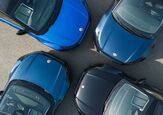



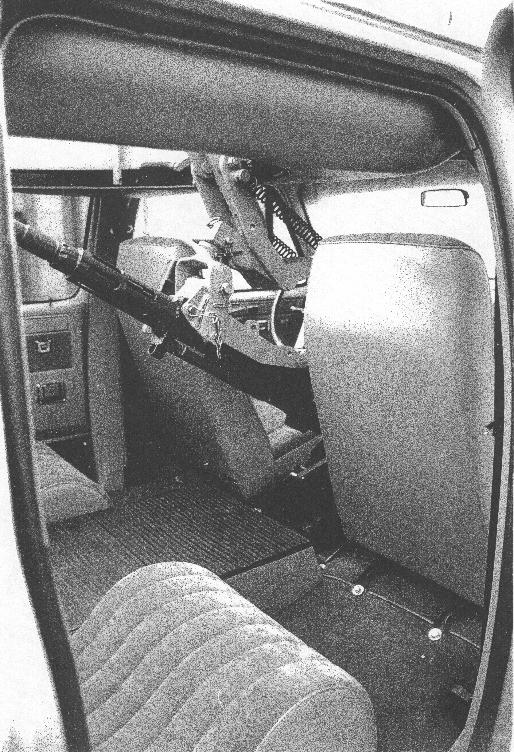



























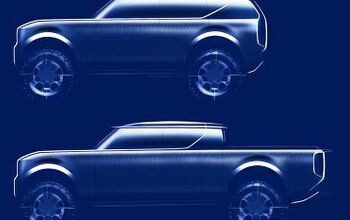


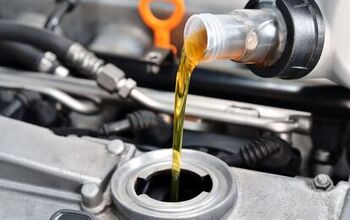



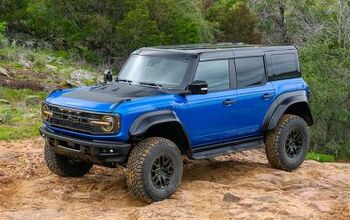


Comments
Join the conversation
"Stutz also made a six-door armored funeral sedan out of the Bear" Seems to me the armor would be more useful *before* the funeral.
I can't seem to find it but weren't quite a few of these used in the first or second Gulf wars by the Iraqis? I just remember seeing these and GM square bodies with machine guns mounted on them in photos.